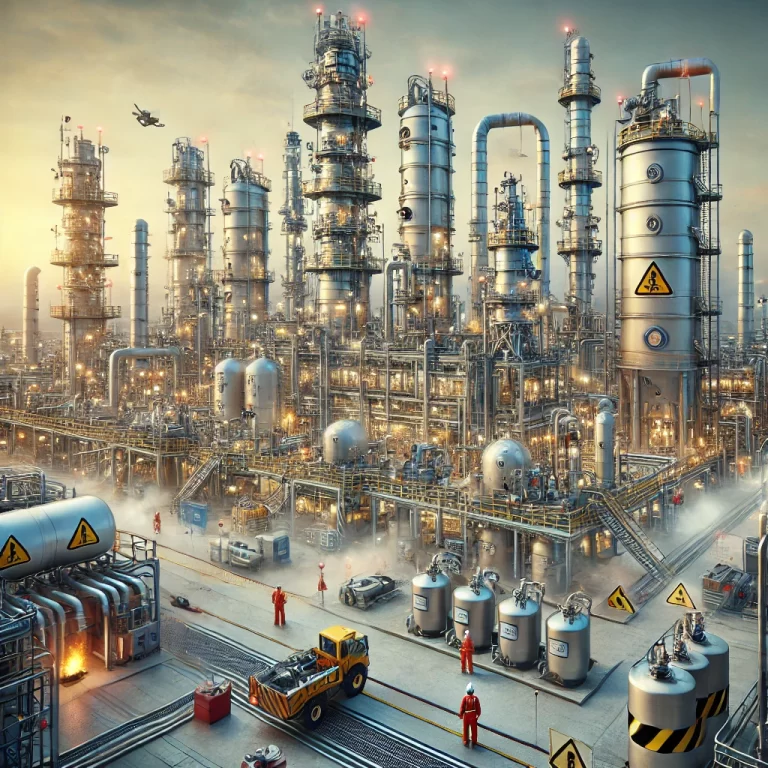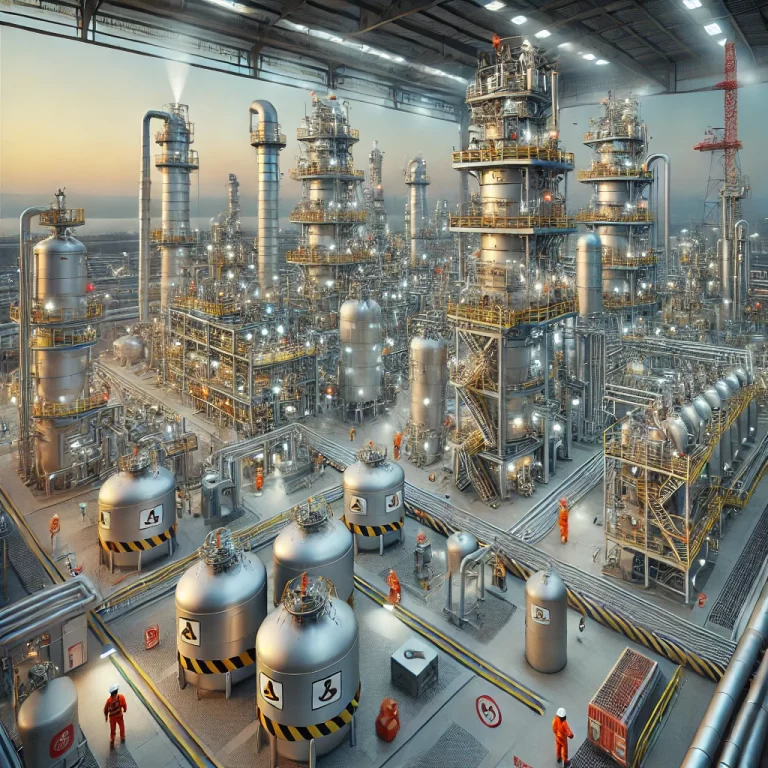1. Introduction
Atmospheric and vacuum distillation units are critical components in petroleum refining, primarily responsible for the initial separation and processing of crude oil. Due to their operation involving high temperatures, high pressures, and flammable substances, these units are susceptible to significant fire and explosion risks. This article analyzes the potential hazards and proposes effective preventive measures to mitigate these risks.
2. Process Overview
Atmospheric and vacuum distillation units separate crude oil into various fractions under different pressure and temperature conditions.
Atmospheric Distillation: Crude oil is heated to 350–400°C and separated into gaseous and liquid phases in the atmospheric distillation tower. The output includes petroleum gas, gasoline, diesel, and residual oil.
Vacuum Distillation: The residual oil from atmospheric distillation is further processed under reduced pressure (0.01–0.05 MPa) and heated to 380–420°C to separate it into light and heavy wax oils and vacuum residue.

3. Fire and Explosion Hazard Analysis
3.1 Flammable Material Leakage
Crude oil and its products are highly flammable with low flash points.
Equipment and pipelines are prone to corrosion and aging, leading to leaks.
Valves and flange connections are common leakage points.
3.2 High Temperature and Pressure Risks
High operational temperatures (200–400°C) can accelerate equipment degradation.
Blockages and malfunctions can cause overpressure, increasing rupture and leakage risks.
3.3 Static Electricity Accumulation and Discharge
Oil products generate static electricity during transport and handling.
Uncontrolled static discharge can ignite flammable vapors.
3.4 Explosive Gas Accumulation
Poor ventilation can lead to the buildup of explosive mixtures.
Leaked oil vapors mixed with air within explosive limits (LEL~UEL) can ignite.
3.5 Ignition Sources
Improper hot work (welding, cutting) and non-explosion-proof electrical equipment pose fire hazards.
Friction and mechanical impact can generate sparks.
3.6 Operational Errors and Management Lapses
Improper handling of valves and systems can cause accidents.
Inadequate safety management and emergency preparedness increase risks.
4. Prevention Measures
4.1 Process Safety Management
Use corrosion-resistant materials and reliable sealing.
Install automatic monitoring and interlock systems for pressure, temperature, and liquid levels.
Implement safety valves and rupture discs to relieve overpressure.
4.2 Leakage Prevention and Detection
Conduct regular inspections and non-destructive testing (ultrasound, radiography).
Install combustible gas detectors in key areas.
Regularly inspect valves and flanges for leaks.
4.3 Static Electricity Protection
Ensure proper grounding of equipment and pipelines.
Use static eliminators and control fluid flow rates during handling.
4.4 Ignition Source Control
Enforce strict hot work permit systems.
Use explosion-proof electrical equipment.
Install friction spark protection devices.
4.5 Ventilation and Pressure Relief
Maintain good ventilation in confined spaces.
Install emergency pressure relief systems.
4.6 Safety Management and Training
Conduct regular safety inspections and risk assessments.
Develop and regularly drill emergency response plans.
Provide comprehensive safety training for employees.
4.7 Firefighting Facilities
Equip high-risk areas with foam, dry powder, and CO₂ extinguishing systems.
Ensure sufficient water supply for firefighting.
Install adequate fire extinguishers and hydrants.

5. Conclusion
Atmospheric and vacuum distillation units present significant fire and explosion hazards due to the involvement of flammable materials, high-temperature operations, and potential ignition sources. Implementing comprehensive safety measures, including advanced equipment design, rigorous safety management, and robust emergency response systems, is essential to ensure safe and stable operation.
